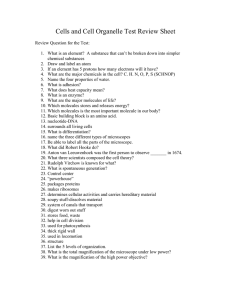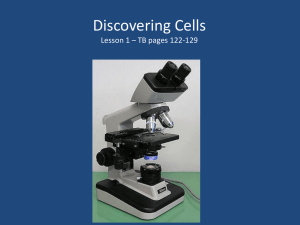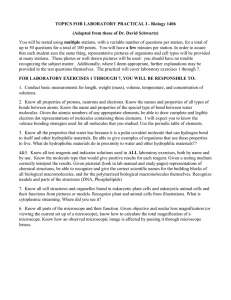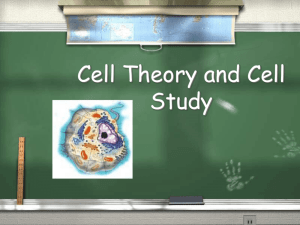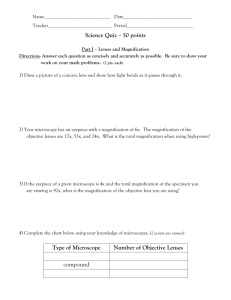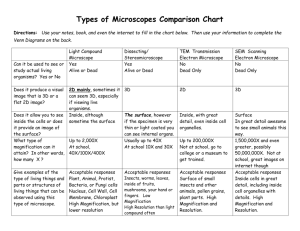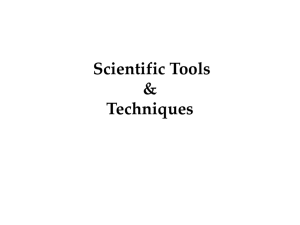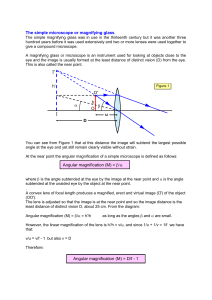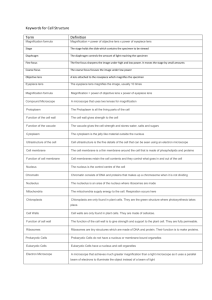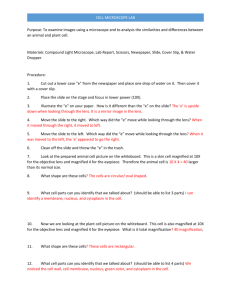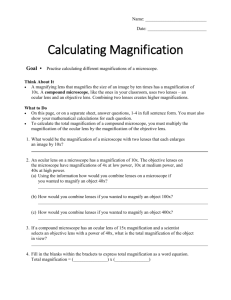Genetics: The Science of Heredity
advertisement
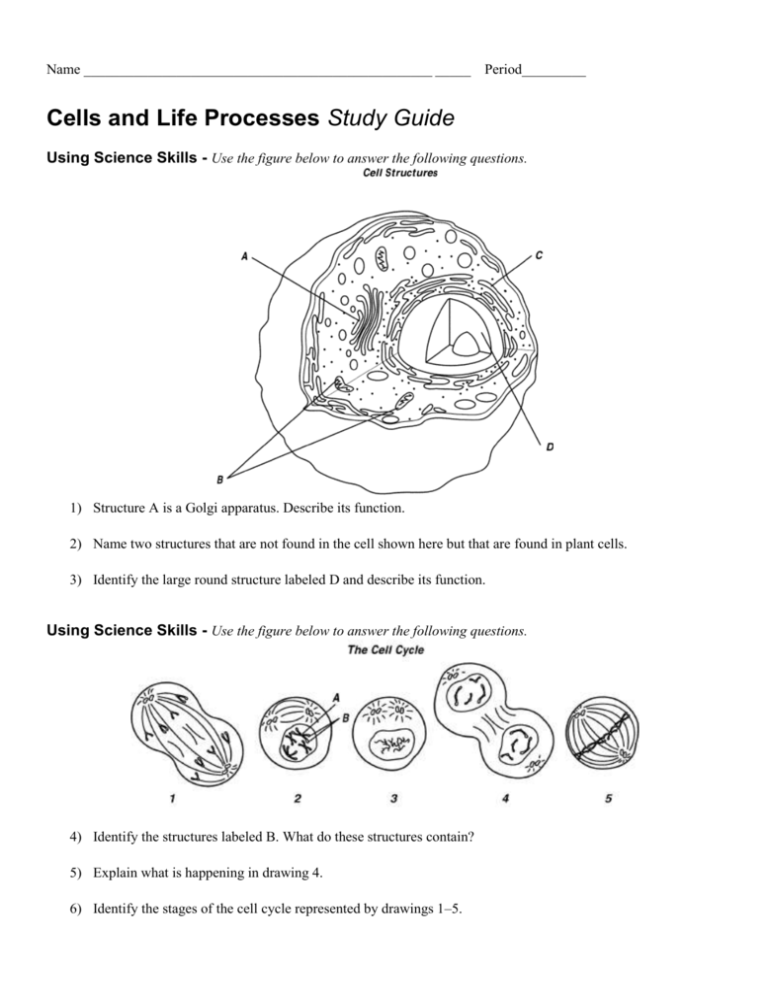
Name _________________________________________________ _____ Period_________ Cells and Life Processes Study Guide Using Science Skills - Use the figure below to answer the following questions. 1) Structure A is a Golgi apparatus. Describe its function. 2) Name two structures that are not found in the cell shown here but that are found in plant cells. 3) Identify the large round structure labeled D and describe its function. Using Science Skills - Use the figure below to answer the following questions. 4) Identify the structures labeled B. What do these structures contain? 5) Explain what is happening in drawing 4. 6) Identify the stages of the cell cycle represented by drawings 1–5. Name _________________________________________________ _____ Period_________ Multiple Choice – Choose the letter of the correct answer 7) A substance that cannot be broken down into simpler elements is a(n) a. particle. c. carbohydrate. b. element. d. compound. 8) What is the basic unit of structure and function in a living thing? a. a cell c. an organ b. a tissue d. an organ system 9) Unlike the cell wall, the cell membrane a. is found in all cells. b. is made of chromatin. c. protects the nucleus with a rigid layer of cellulose. d. produces energy for the cell. 10) Many substances move through cell membranes from areas of higher concentration to areas of lower concentration in the process of a. cellular respiration. c. reproduction. b. diffusion. d. DNA replication. 11) Which organelle is the control center of a cell? a. mitochondrion c. nucleus b. ribosome d. chloroplast 12) What does the term resolution refer to? a. how well structures close together can be distinguished b. how large an image can be c. how many lenses a microscope uses d. how much light is needed to see an image 13) What is the total magnification of a microscope with two lenses when one lens has a magnification of 15, and the other lens has a magnification of 30? a. 15 c. 45 b. 30 d. 450 14) What is copied during replication? a. the cell’s organelles b. chromosomes c. the cell’s DNA d. two daughter cells 15) Which of the following best describes the function of mitochondria? a. They convert energy from food molecules into energy the cell can use. b. They store energy from food molecules. c. They store energy from sunlight. d. They produce nucleic acids that release energy. 16) Unlike Hooke, Leeuwenhoek observed cells that a. had no cell walls. b. came from plants. c. were alive. d. could only be seen with a compound microscope. Name _________________________________________________ _____ Period_________ Completion 17) A cell’s nucleus divides to form two identical nuclei during the stage of the cell cycle known as _________________. 18) Obtaining and using energy from food and removing wastes are two processes that help cells maintain ___________. 19) During cellular respiration, _________________ is needed to release energy from glucose molecules. 20) Small grain-like bodies called ____________________ produce proteins inside cells. 21) A(n) ____________________ is a group of similar cells that work together to perform a specific function. True or False If the statement is true, write true. If it is false, change the underlined word or words to make the statement true. 22) A cell makes a copy of its DNA during the stage of the cell cycle called mitosis. 23) A(n) compound microscope uses a beam of electrons to produce a magnified image. 24) Tiny fish growing into big fish are an example of the growth function of cell division. 25) The cell theory states that cells are produced from nonliving cells. 26) During cytokinesis in plant cells, a(n) cell plate forms across the middle of the cell.

